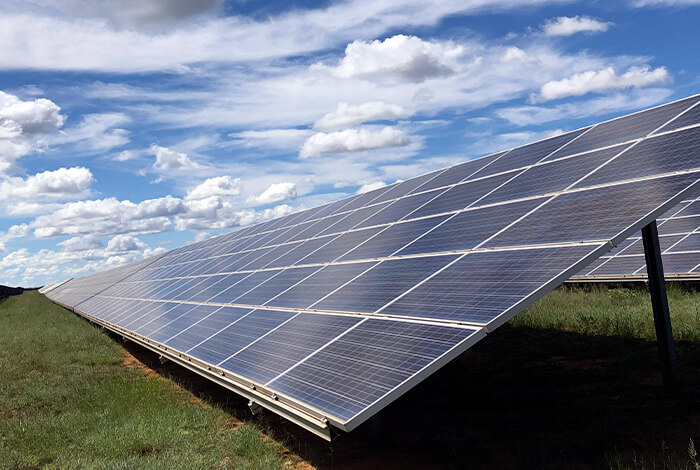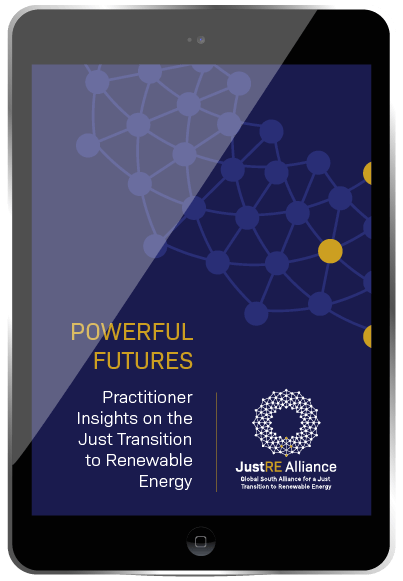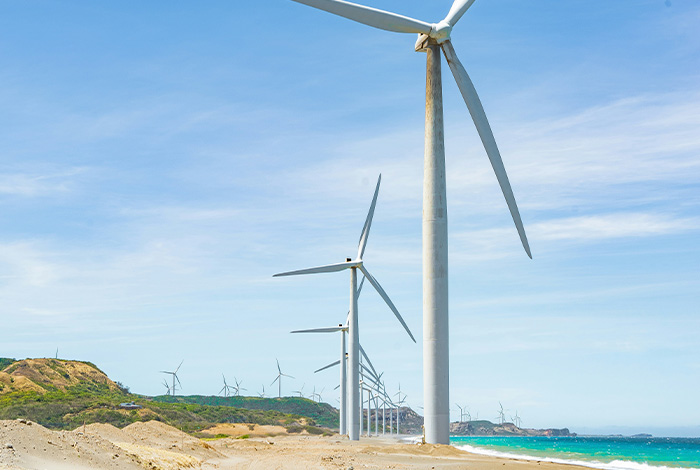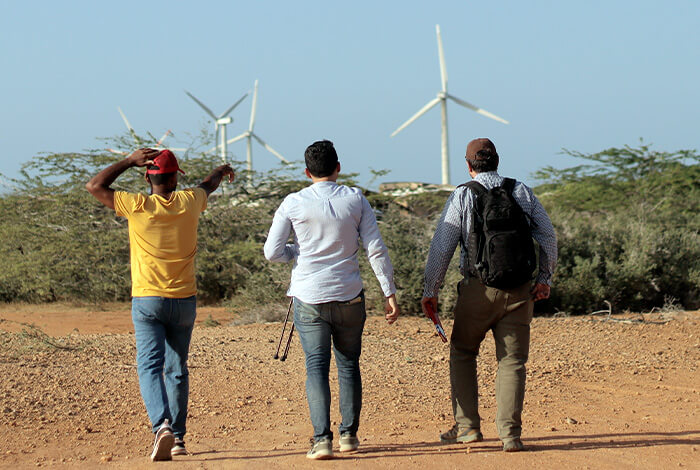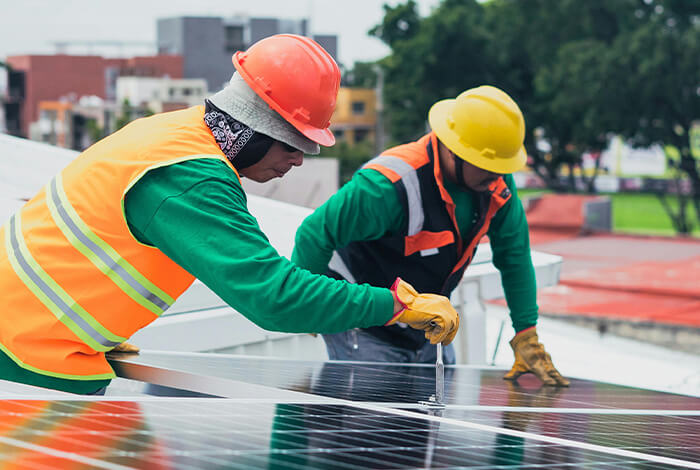Renewable energy projects can enable a just transition by ensuring direct benefits flow to local host communities. Benefit sharing means giving local populations part of a project’s added value in recognition of the critical enabling role they and their surrounding ecosystems play. This chapter discusses how to share benefits and provides examples of where different methods have been effectively deployed.
Context
Shared benefits can be defined as contributions made by a project to local communities that help improve living conditions and build skills, reducing vulnerability and strengthening cohesion. If devised in a culturally appropriate and conflict-sensitive way, benefit sharing helps foster local socio economic development and creates good relations between the project and regional stakeholders, increasing the project’s social acceptance.
Benefit sharing differs from infrastructure, assets, and amenities brought to facilitate project execution. Examples of the latter include constructing roads for the transport of materials. Other social amenities for construction workers shared with the community members also do not constitute benefit sharing. Similarly, shared benefits are distinct from measures to mitigate negative impacts or compensate for loss where avoidance is impossible, such as restoring natural habitats.
Benefits can take various forms, monetary and non-monetary, including technology or equipment, skill-, knowledge-, and capacity building, such as technical assistance in livelihood development, community infrastructure and social services. The mix of investments and the form, timing, and allocation of benefits should be determined in a participatory fashion. Community needs assessments and engagement mechanisms (see Chapter 4) must be sustained throughout the project lifecycle. They should clarify and codify mutual expectations, monitor progress, and allow joint troubleshooting and adaptation during project implementation. Sustainability beyond project closure is essential and is fostered through well-targeted benefit sharing.
Emerging Good Practice
The practice of benefit sharing draws on traditions and frameworks of community development and related disciplines (e.g. local economic development, urban planning, social development, and psychology). This chapter provides a high-level overview of key considerations when planning, prioritising, implementing, and monitoring community benefit schemes.
How to get Benefit Sharing Rights
methodology or silver bullet exists. Some countries have specific benchmarks for mandatory compliance, while others may have voluntary guidelines. In either case, minimum standards for benefit sharing should be established to manage expectations based on discussions and negotiations with relevant stakeholders — the developer, the community, and the various spheres of government. This takes place in an iterative process that depends on multiple considerations, including construction and operating costs, grid connection costs, interest rates, resource quality, and electricity costs.
In general, determining shared benefits depends on a series of considerations:[2] International Finance Corporation, 2019, Local Benefit Sharing in Large-Scale Wind and Solar Projects
- Legal and financial requirements
- Corporate culture
- Community and stakeholder rights and claims
- Local development needs
- Project-specific potential to generate benefits
- Broader considerations regarding social acceptance (e.g., history of conflict, land tenure insecurity, multidimensional poverty and unemployment levels, legacies and trauma from other large development interventions, presence of vulnerable groups, including Indigenous Peoples, etc.)
Community members should be at the centre of the design and implementation of the benefit-sharing mechanism. A unilaterally conceived benefit-sharing package devised by the renewable energy company alone is a missed opportunity to build bridges. It will result in a less effective programme that does not adequately consider community interests or give them a direct voice in decision-making. For more information about community engagement practices, see Chapter Effective Community Engagement.
Long-term benefits can be achieved if the project is undertaken with a strategic impact objective (e.g., to improve education in the area). Initiatives executed in isolation from other ongoing development activities in the area tend to be less effective than strategic investments planned for and implemented in partnership with local stakeholders and institutions. Ideally, community members become leaders of the benefit-sharing scheme, and local implementation capacity is built. For example, if the mechanism is related to revenue sharing, communities could monitor revenue and inform residents about project performance; if the mechanism is related to public services, community members can play various roles in delivery.
A community’s worldview, knowledge and underlying assumptions may be different from those of developers. Such differences are likely to surface throughout the implementation of the benefit-sharing scheme. There is a need for continuous exchange between stakeholders to build trust. The presence of company representatives, particularly skilled social performance practitioners, is often invaluable. Practitioners can become deeply familiar with a community’s ways of life and internal dynamics and understand their perspectives and capacities. Appreciating existing local assets (social, financial, etc.) is advisable, as it supports filling capacity gaps and enables community and local government stakeholders to implement benefit schemes and manage investments effectively.
Establishing feedback mechanisms and a participatory monitoring and evaluation system that builds accountability and tracks progress and barriers to implementation is crucial. Participatory monitoring should involve legitimate representatives of all concerned stakeholders, from local governments and communities to public officials and private sector representatives, including contractors. A monitoring plan should focus on several crucial output, outcome, and impact indicators suitable to track progress made towards defined objectives.[3]International Finance Corporation, 2019, Local Benefit Sharing in Large-Scale Wind and Solar Projects Benefit-sharing schemes should be reviewed regularly or whenever there is a significant change in the project’s operational context, such as shareholding changes or project expansions. This should be done through an agreed-upon guideline or procedure between the company and the community.
Opportunities for benefit sharing
Over time, various categorisations for benefit sharing have emerged based on specific national experiences[4]MDPI, 2019, Benefit Sharing in the Arctic: A Systematic View
[5]Clean Energy Council, 2019, A Guide to Benefit Sharing Options for Renewable Energy Projects or technologies.[6]Nina Lansbury Hall et al, 2017, Evaluating Community Engagement and Benefit-Sharing Practices in Australian Wind Farm Development[7]Julia le Maitre, 2024, Price or public participation? Community benefits for onshore wind in Ireland, Denmark, Germany and the United Kingdom Attempts have been made to create a broader taxonomy encompassing multiple renewable energy technologies and countries. Notably, the 2019 report on benefit sharing in the context of large-scale wind and solar projects by the International Finance Corporation (IFC)[8]International Finance Corporation, 2019, Local Benefit Sharing in Large-Scale Wind and Solar Projects is adapted to present practice examples.
This category of benefits includes financial and ownership structures where developers, employees, local community members and landowners participate in managing a renewable energy venture and share in its profits. Income generated from the project could be distributed among these stakeholders based on predefined agreements. Shared ownership is a collaborative investment model where multiple parties hold ownership stakes in the project. These may take different forms, examples of which we have set out below.
Recurring payments to local government and community
Preferential electricity rates and discounts
Shared ownership
RE projects can build skills and improve employment prospects for local labour and businesses. Various jobs are created over the course of the project’s lifecycle. Job opportunities include construction workers, technicians, engineers, and administrative staff. Specialised expertise is required in engineering, technical fields, project management, environmental science, and data analysis. When a longer-term perspective is taken to recruitment and local supplier procurement, individuals can gain valuable training and experience, increasing their employability beyond the project’s lifecycle.
Additionally, renewable energy projects can stimulate local economies by creating demand for local services and products, promoting long-term employment and entrepreneurial opportunities. The projects can also offer opportunities to build institutional capacity. Whether jobs are provided to members of the local communities and the economic stimulation is sustained depends on the ability of the project company to act on its close proximity to local residents. Where mutually beneficial relationships are created, companies will experience lower risks of construction and operation delays, reduced litigation, and a lessening of cost increases in doing business in a conflictual environment.
Employment and local procurement
Alternative skills and livelihoods
Local institutional capacity building
This type of benefit sharing involves the development of infrastructure and community services. These can encompass but are not limited to increasing access to energy, educational facilities, health and cultural centres, markets, recreational areas, public lighting systems, and water facilities.
Basic services provision and infrastructure
Environmental stewardship consists of maintaining or improving the local ecosystem. It is important not to confuse such actions with remediation of impacts from a power plant’s installation and operation. Examples of this type of benefit sharing include reforestation programmes, projects to improve households’ energy efficiency, and building sustainable local economies resilient to climate and disaster risks.
Environmental enhancements
Low-carbon community development
Future glimpse
Priyanka remembers when people came to talk about the first solar park in 2025. It was a heated discussion, not least because the AC in the old hall wasn’t working due to one of the common power cuts in those days. She was sceptical that anything would really change. She’d heard the stories of what had happened in a couple of neighbouring districts.
Years later, as she walks her son to school before heading to her nursing practice, she knows the school and hospital buildings would not exist without the solar park. Her uncle still works with Legendary Builders, who constructed both buildings and continue to help with repairs. The initial injection of money from the solar project’s CSR fund for local infrastructure meant that Legendary could demonstrate their experience, and from then on, they’ve worked across the state.
Power cuts don’t worry her as she flicks the switch for the monitors. She knows she will have electricity to perform the day’s scheduled procedures. Today will be busy! Later that evening, she will attend the shareholders’ meet-up. It’s a big day for the representatives of the community shareholder trusts across the District. Priyanka enjoyed the last one despite being tired from work. She was inspired by some of the ideas from other communities that now have an emerging ecotourism and conservation sector. Priyanka loves her town by the river and is sure others would love to visit, too.
- International Finance Corporation, 2019, Local Benefit Sharing in Large-Scale Wind and Solar Projects
- International Finance Corporation, 2010, Strategic Community Investment: A Quick Guide Highlights from IFC’s Good Practice Handbook
- International Council on Mining and Metals, 2012, Community Development Toolkit
- World Wild Forest, 2015, A review of the local community development requirements in South Africa’s renewable energy procurement programme
- [1] Columbia Center on Sustainable Development, 2023, Community Benefit Sharing and Renewable Energy and Green Hydrogen Projects: Policy Guidance for Governments
- [2] [3] [8] International Finance Corporation, 2019, Local Benefit Sharing in Large-Scale Wind and Solar Projects
- [4] MDPI, 2019, Benefit Sharing in the Arctic: A Systematic View
- [5] Clean Energy Council, 2019, A Guide to Benefit Sharing Options for Renewable Energy Projects
- [6] Nina Lansbury Hall et al, 2017, Evaluating Community Engagement and Benefit-Sharing Practices in Australian Wind Farm Development
- [7] Julia le Maitre, 2024, Price or public participation? Community benefits for onshore wind in Ireland, Denmark, Germany and the United Kingdom
- [9] Law 2294 of 2023, Colombia’s National Development Plan 2022-2026
- [10] Decree 1302 of 2022, Transfers from the electric sector destined for Indigenous communities
- [11] Republic of Kenya, 2020, The Natural Resource (Benefit Sharing) Bill
- [12] Franziska Müller and Simone Claar, 2021, Auctioning a ‘just energy transition’? South Africa’s renewable energy procurement programme and its implications for transition strategies
- [13] Independent Power Producer Procurement Programme, 2024, An Overview — Independent Power Producers Procurement Programme — as At 31 March 2024
- [14] Initiative for Social Performance in Renewable Energy, 2024, True community ownership in the shift to renewables — just how far off are we?
- [15] Meliquina, ANTÚ 1 — Empowering Patagonia: a Community-Driven 18 MW Solar Venture [Accessed in June 2024]
- [16] JSW Energy, 2023, Annual Integrated Report 2022-23
- [17] Hero Future Energies, 2022, Sustainability Report 2021-22
- [18] INSPIRE, 2024, New project: Trust Matters
- [19] Greenwood Energy, 2023, Terra Initiative
- [20] AES, 2022, Acelerando la transición energética de Colombia
